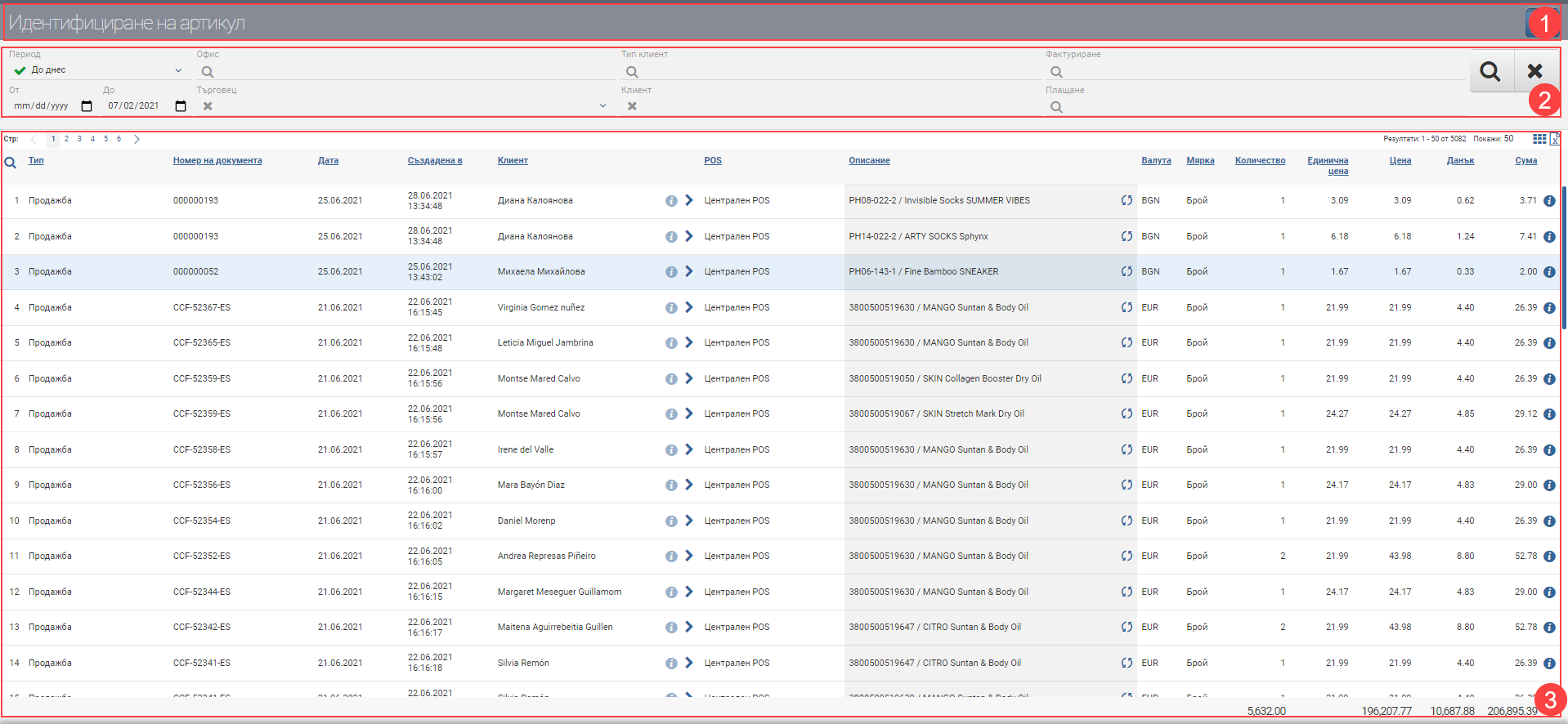The interface is used to identify items in sales imported from e-commerce systems that do not appear in the system’s nomenclature. If the item code in the sales order entered through one of the integrations is not recognized in the system, the sale cannot be processed. The user must use the Identify Items interface and indicate which item in the product list corresponds to the one in the sale, and if it is new- create it and then “link” them.
The interface consists of Header (1), Filter (2), Result (3):

Header (1)
In the Header (1) you see the interface name and a blue button that hides and shows the Filter (2).
Filter (2)
To process unidentified items in your sales faster, the system provides you with different ways to filter information coming from one or more channels. The search is started with the Magnifying Glass, and the Hicks clears all filters. In the table below you will see all the filters and their explanations:
| Filter | Description | Further description of the options |
| Period | Choose from a drop-down menu for which period to display your sales. Works by date of sale. | The possible options are: – Today – Yesterday – The last 7 days – Last 30 days – The last 365 days – Current month – Previous month – Current quarter – Previous quarter – Current year – Previous year – To date – shows all sales to date, from the first sale entered into the system, regardless of date. |
| From date – To date | You select specific dates as the period for which to display sales. Works by date of sale. | |
| Office | Filter by the office from which the sales were created. | |
| Customer type | Filter by Customer Type to which sales are created. | |
| Client | You filter by a specific customer to which sales are created. | |
| Merchant | Filter by Merchant selected in sales. | |
| Invoicing | Filter by the Billing Method that created the sales. | The possible options are: – Invoice – Receipt – Cash voucher |
| Payment | Filter by the Payment Method with which the sales were created. |
Result (3)
A list of sales rows will appear in your table. If there are 3 unidentified items in a sale, they will be 3 different lines here.
The row-by-row table contains the following columns:
| Column | Description |
| Type | Sale / Sale cancellation |
| Document number | Number of sale |
| Date | Date of sale |
| Established in | Date and time of creation of the sale. |
| Client | Counterparty to the sale |
| Opens a contractor file. | |
| Filters by counterparty. | |
| POS | POS from which the sale was made. |
| Description | Description of item/service. |
| Opens an interface to select an item from the inventory to replace the unknown item. | |
| Currency | Currency of sale. |
| Measure | Measure of the item/service. |
| Quantity | Quantity of the item/service from the sale. |
| Unit price | Displays the unit price of the line. |
| Price | Displays price per line (unit price*quantity). |
| Tax | Amount with taxes of the item/service from the sale. |
| Sum | Shows the total price of the line items with taxes. |
| Opens file of sale |